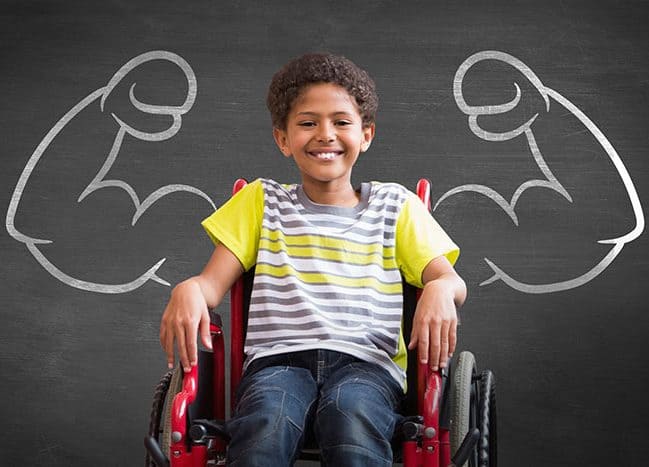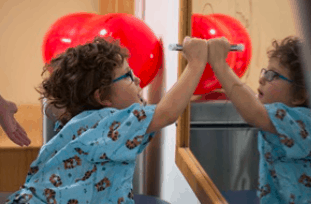Duchenne muscular dystrophy, often referred to as DMD or Duchenne, is a rare genetic disease. However, DMD is the most common form of muscular dystrophy in children. Primarily DMD affects boys with every 1 in 3,500 to 5,000 boys born getting it each year. But in very rare situations it affects females too. Overtime, this type of muscular dystrophy causes the muscles in the body to become weak and damaged. Eventually Duchenne will become fatal.
Duchenne muscular dystrophy is caused by a genetic mutation in the DMD gene. This gene can be inherited and happens before birth. But new mutations in the DMD gene can happen spontaneously. This genetic mutation prevents the body from producing dystrophin, a protein found in muscle cells. This group of proteins work together strengthening the muscle fibers and protecting them from injury as the muscles contract and relax. When the body cannot produce dystrophin, the muscle cells weaken and become damaged.
Duchenne muscular dystrophy also affects a child’s brain development. The neuron is a basic working unit of the brain and transmits information to other areas of the body. Because children with DMD lack dystrophin, it affects the neurons ability to connect properly and share inf ormation. Functions such as learning, speech, attention span, and intellectual ability become a challenge. ADHD, ASD, dyslexia, and OCD are more likely to occur as a result of this. Also, children with Duchenne have abnormal electrical activity in the brain which makes them more prone to developing epilepsy or seizures.
ormation. Functions such as learning, speech, attention span, and intellectual ability become a challenge. ADHD, ASD, dyslexia, and OCD are more likely to occur as a result of this. Also, children with Duchenne have abnormal electrical activity in the brain which makes them more prone to developing epilepsy or seizures.
Some of the first signs and symptoms of DMD are typically noticed by age 2 or 3 with 5 years old being the average age of diagnosis. Common signs and symptoms include falling down often and slower to sit, stand, or walk. Other signs and symptoms include delayed speech, larger calves than other children of the same size/age, and walking on their toes with legs apart or walking with the belly pointed out (sometimes both). Lastly, a big one is needing help getting up from the floor or using their arms to “walk” the body to a standing position.
Even though Duchenne is fatal, recent advances in medicine have helped people with DMD live longer. Using available treatments helps prolong life because the treatments help maintain comfort and function. Going to physical therapy is one of the treatment options. Physical therapy helps keep a person with DMD moving and allows them to stretch their muscles. This helps delay contractures because it keeps the muscles from shortening. Short amounts of exercise at physical therapy help build up the skeletal muscle which keeps the cardiovascular system healthy. Also, physical therapy helps with greater motion in the joints and preventing scoliosis.
If you think your child might have DMD please call their doctor.


